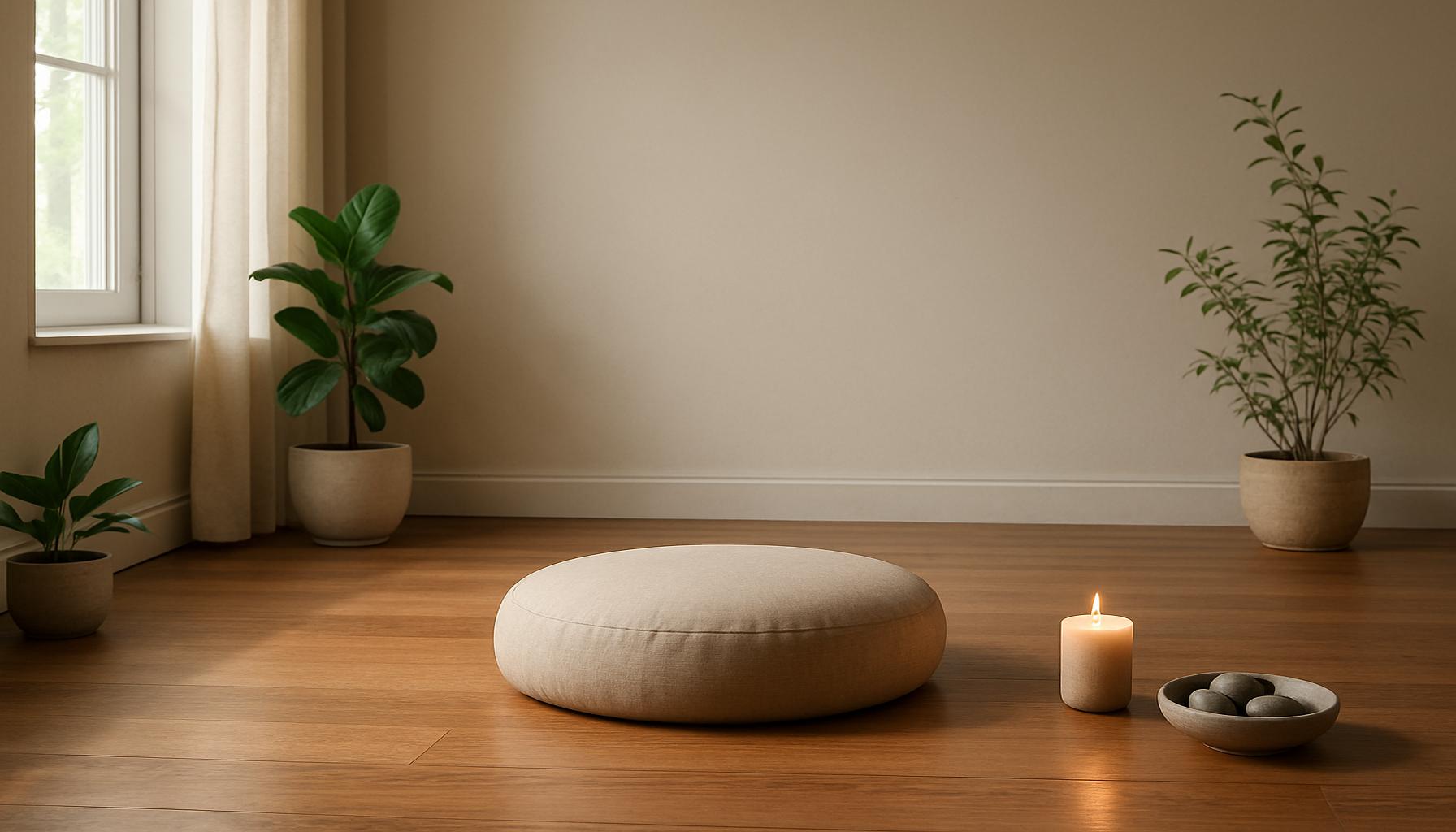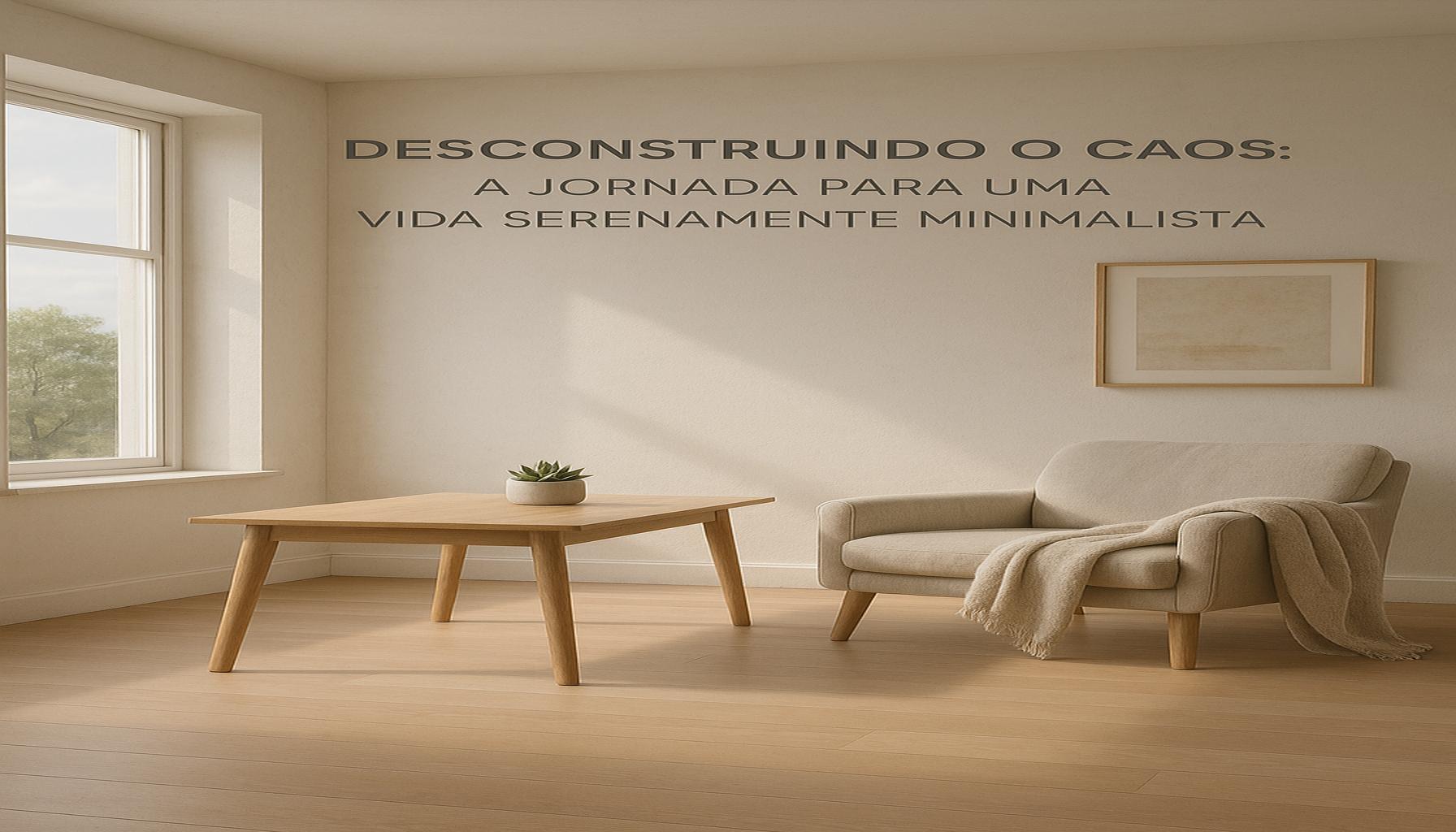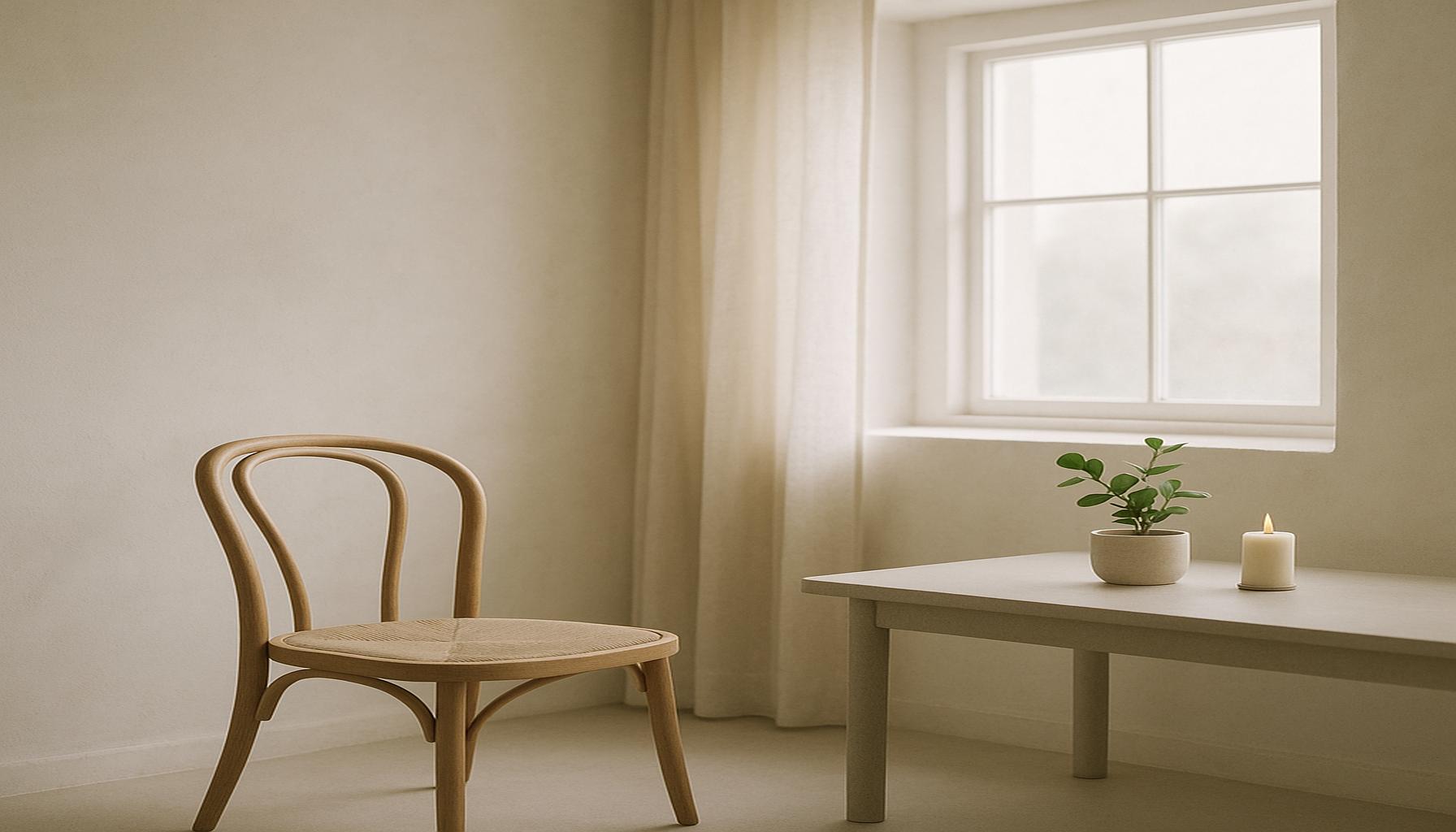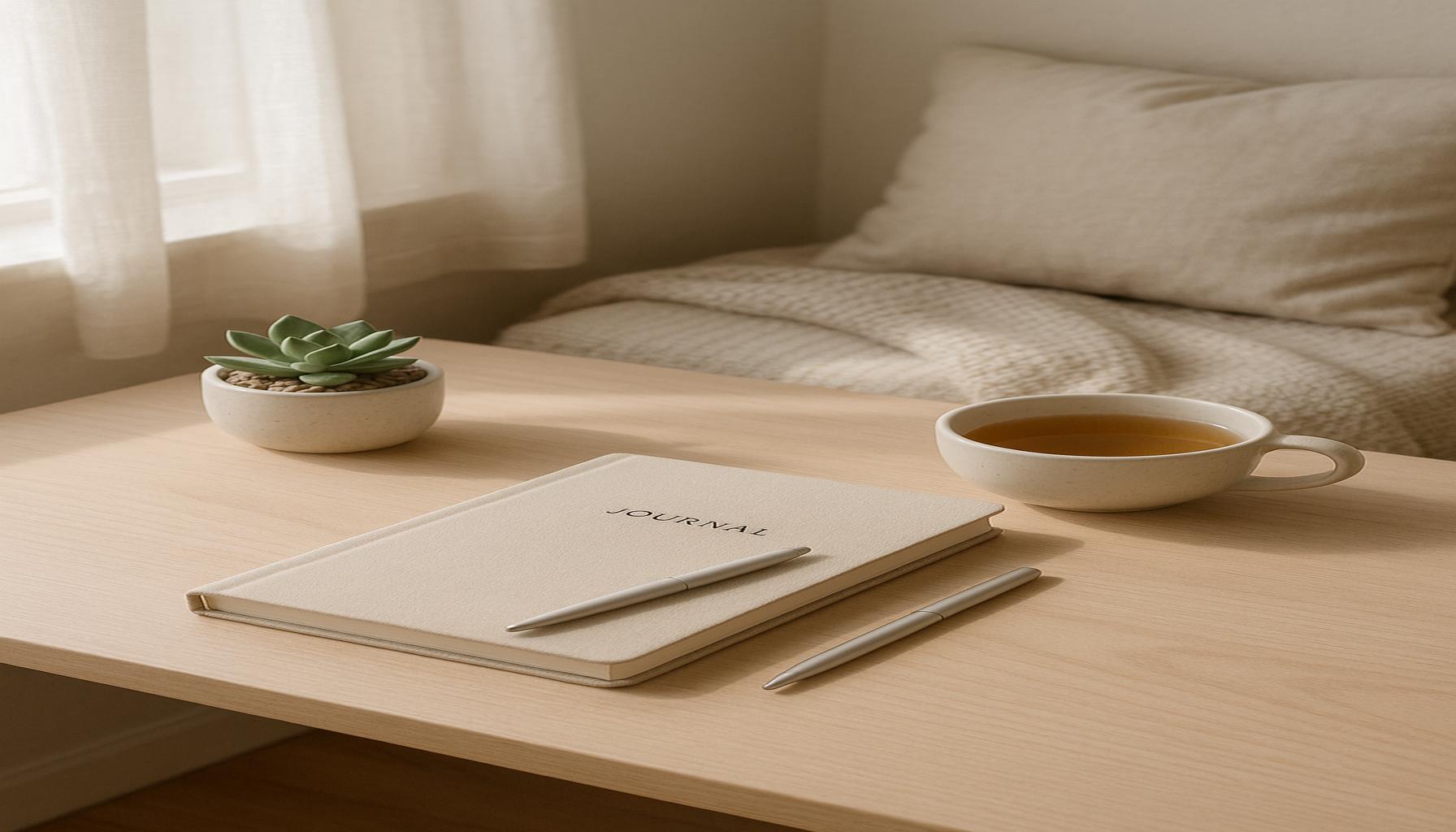Mindfulness and Minimalism: Finding Serenity in Daily Routine

The Pursuit of Peace in Everyday Life
In today’s fast-paced world, the quest for serenity can often feel elusive. The constant barrage of notifications, social media updates, and the relentless demands of modern life perpetuate a sense of chaos. However, many individuals are discovering refuge in two transformative practices: mindfulness and minimalism. These practices are not just fleeting trends; they offer powerful tools for cultivating a deeper sense of peace and fulfillment in our daily lives.
The Synergy of Mindfulness and Minimalism
Integrating mindfulness with minimalism leads to remarkable benefits that resonate throughout our lives. For instance:
- Reduced Stress: By focusing on the present moment, mindfulness helps alleviate anxiety about the future. When you practice being fully aware of your current experiences, you can diminish the overwhelming worries that often plague our minds. For example, spending time in nature, even for just a few minutes, can ground you and provide immediate relief from stress.
- Simplified Living: Embracing minimalism involves removing unnecessary possessions and distractions. This act of decluttering not only clears physical space but also mental clutter. People who adopt this lifestyle often report feeling lighter and more liberated. For example, creating a capsule wardrobe—where you select a limited number of versatile clothing pieces—simplifies daily decisions and fosters a sense of ease.
- Enhanced Focus: A minimalist environment fosters a space conducive to deep thought and creativity. With fewer distractions, you’re free to engage fully in your passions and professional tasks. Think about a workspace stripped of unnecessary items; it allows for better concentration on projects and enhances productivity.
A Growing Movement
Across the United States, a growing number of individuals are embracing these concepts, seeking to adopt a lifestyle that prioritizes mental clarity over material excess. Studies indicate that more Americans are seeking therapy and wellness programs focused on mindfulness practices, showing a significant cultural shift towards valuing mental health.
Practicing mindfulness encourages individuals to engage fully with their surroundings, fostering a sense of connection to the world around them. Techniques such as meditation, deep-breathing exercises, and mindful eating are becoming increasingly popular, empowering people to take control of their mental well-being.
Practical Steps to Embrace Mindfulness and Minimalism
In this exploration, we will delve into practical strategies and insights that can help you find your own path to serenity through mindfulness and minimalism. Consider starting with simple changes, such as dedicating a few minutes each day to meditation, journaling your thoughts, or actively decluttering one space in your home each week. Prepare to embark on a journey that could reshape your perspective on life and inspire you to build a more intentional and serene way of living.
DISCOVER MORE: Click here for tips on minimalist personal organization
Embracing Mindfulness in a Material World
As more people strive for serenity amidst life’s hectic pace, mindfulness emerges as a cornerstone for achieving a balanced lifestyle. The practice, rooted in ancient traditions, encourages individuals to maintain a state of awareness in the present moment, free from judgment and distraction. This attentiveness not only enhances mental well-being but also fosters greater appreciation for life’s simple moments.
Incorporating mindfulness into your daily routine can be straightforward and transformational. Here are some impactful techniques:
- Meditation: Setting aside time each day for meditation can help you reconnect with yourself. Start with just five minutes of focused breathing, letting go of the chaos surrounding you. Studies suggest that even short sessions can reduce stress and improve emotional regulation.
- Mindful Daily Activities: Engaging fully in daily tasks such as washing dishes or walking can become moments of mindfulness. Instead of rushing through these chores, concentrate on the sensations—the warmth of the water, the aroma of your surroundings, or the rhythm of your steps. This practice cultivates a deeper connection to your experiences.
- Gratitude Journaling: Writing down what you are thankful for encourages you to shift your focus from what you lack to what you have. This can be particularly beneficial in a society that often emphasizes acquisition. Start with three things each day, however small, and watch your mindset evolve.
Minimalism: The Art of Letting Go
On the other hand, minimalism invites you to examine the things you own. It challenges the notion that accumulation leads to happiness and instead posits that decluttering your physical environment can lead to a decluttered mind. This philosophy promotes a lifestyle centered around intention, where each item you choose to keep serves a purpose—be it utility or joy.
To begin your journey toward minimalism, consider these simple steps:
- Begin with Your Space: Choose a specific area of your home—a closet, a drawer, or even your desk—and remove everything from it. Assess each item: Do you use it? Does it hold sentimental value? If not, it may be time to let it go.
- Set Limits: Adopt a one-in-one-out rule. When you acquire something new, commit to removing something else from your collection. This method helps prevent the cycle of accumulation.
- Engage with Intent: Focus on what you truly need and appreciate, and let go of the excess. As you curate your possessions, you’ll find that the space you create allows you to breathe more easily, giving you room to think and feel clearly.
The intersection of mindfulness and minimalism creates a nurturing environment for serenity. By practicing mindfulness, you can learn to appreciate the present moment more fully, which complements the minimalistic approach of valuing only what is necessary and meaningful. This unique combination can potentially reshape not only your environment but also your emotional landscape, guiding you toward a more serene existence in today’s bustling world.
| Advantage | Description |
|---|---|
| Increased Focus | Mindfulness enhances your ability to concentrate on tasks, reducing multitasking and improving overall productivity. |
| Emotional Balance | Practicing minimalism and mindfulness curtails emotional clutter, allowing for better emotional regulation and stronger resilience during stress. |
Mindfulness and minimalism are intertwined practices that guide individuals toward a state of peace and clarity. Central to mindfulness is the focus on the present moment, which can significantly improve your daily routine. This practice of becoming more aware of your thoughts and emotions fosters an environment conducive to calmness. By choosing a minimalist lifestyle, you can eliminate distractions, leading to a clearer mind and promoting greater engagement with the present.Additionally, minimalist principles encourage individuals to live with intent. When you consciously choose what to keep in your life, be it possessions or commitments, you allow space for the truly important aspects of life to flourish. This process not only elevates your daily experiences but also promotes well-being by minimizing stressors that often arise from excess. Incorporating these strategies into your daily routine can result in profound changes in both mental health and overall quality of life. By prioritizing mindfulness and adopting a minimalist mindset, you can embark on a journey towards finding true serenity amidst the chaos of modern life.
DISCOVER: Click here to enhance your productivity
The Synergy of Mindfulness and Minimalism
The concept of mindfulness intertwines seamlessly with minimalism, creating a synergistic effect that enhances your daily routine and overall quality of life. When mindfulness encourages you to treasure the present, minimalism fosters an environment stripped of distractions, allowing you to immerse yourself fully in each moment. Together, they offer a pathway toward a more serene existence amid the chaotic demands of modern life.
Research corroborates the positive impact of both practices on mental health. A study published in the journal *Psychological Science* found that individuals practicing mindfulness reported lower levels of anxiety and depression. In a similar vein, a minimalistic lifestyle has been linked to reduced stress levels, as it liberates individuals from decision fatigue caused by managing excessive belongings. This dual approach can lead to a profound shift in emotional well-being, catalyzing a deeper sense of peace and contentment.
Creating a Mindful Home Environment
One of the essential aspects of integrating mindfulness and minimalism is the curation of your living space. A mindful home environment is designed with intention, promoting calm and reflection. Here’s how you can foster such an atmosphere:
- Incorporate Natural Elements: Bringing nature indoors through plants, natural light, and organic materials can create a soothing ambiance. Studies have shown that exposure to nature can reduce stress and enhance mood, making your living space a sanctuary for mindfulness.
- Designate a Mindfulness Spot: Create a small area in your home dedicated solely to mindfulness practices. It could be as simple as a chair by the window, surrounded by meaningful objects that inspire calm. This space can serve as a daily retreat for meditation or reflection.
- Limit Visual Clutter: A minimalistic approach to decor emphasizes simplicity. Choose a color palette that soothes rather than overwhelms. Fewer decorations allow for greater focus on the elements that truly resonate with you.
Mindful Consumption: Rethinking Purchases
Both mindfulness and minimalism encourage a conscious approach to consumption, urging you to ask the tough questions: Do I need this? Will it bring me joy or add value to my life? Mindful consumption fosters a shift from impulse buying to deliberate decision-making. It invites reflection on the true cost of items beyond their monetary value, considering their impact on your mental space and emotional health.
Before making a new purchase, consider adopting a 30-day rule: if you still want the item after a month, it may be worthy of your space and attention. This practice not only curtails unnecessary clutter but also gives you the opportunity to engage with your desires more thoughtfully.
Moreover, a minimalistic lifestyle aligns closely with sustainable practices, as it advocates for less waste and greater awareness of our environmental footprint. By consciously choosing fewer, higher-quality items that last longer, you’re not only enriching your life but also contributing positively to the world around you.
Ultimately, the partnership between mindfulness and minimalism does not just reshape your physical environment. It opens pathways to emotional clarity, encouraging a deeper connection to yourself and the world around you. This transformative journey is your invitation to explore what it truly means to live with intention and peace in today’s fast-paced society.
DIVE DEEPER: Click here to learn more about simplifying your life
Embracing Serenity through Mindfulness and Minimalism
In a world that often feels overwhelmingly fast-paced and cluttered, embracing mindfulness and minimalism offers a transformative pathway to serenity. By consciously curating our living spaces and making intentional decisions about our belongings, we can create not only a soothing environment but also a clearer mental landscape. Mindfulness invites us to live in the present, appreciating the small moments that fill our days, while minimalism strips away the distractions that hinder our focus and peace.
As we’ve explored, these two practices complement each other beautifully. Mindfulness reduces anxiety and promotes emotional well-being, supported by a minimalistic lifestyle that alleviates stress from decision fatigue. Together, they empower us to prioritize what truly matters, enhancing our quality of life and fostering resilience against the chaos around us.
Consider taking the first steps toward this serene existence by reflecting on your daily routines and consuming mindfully. Ask yourself what objects and habits add genuine value to your life. This reflection can spark a meaningful shift, leading to a home and life grounded in tranquility and purpose. The ultimate aim is not absolute simplicity but a thoughtful, intentional approach to both living and relating to your surroundings.
Thus, as you navigate your journey through mindfulness and minimalism, remember that serenity is not a destination but a practice—one that enriches your daily routine and cultivates lasting peace amidst the clamor of modern life. Embrace this journey of exploration, and let it unfold into a more meaningful and serene existence.


